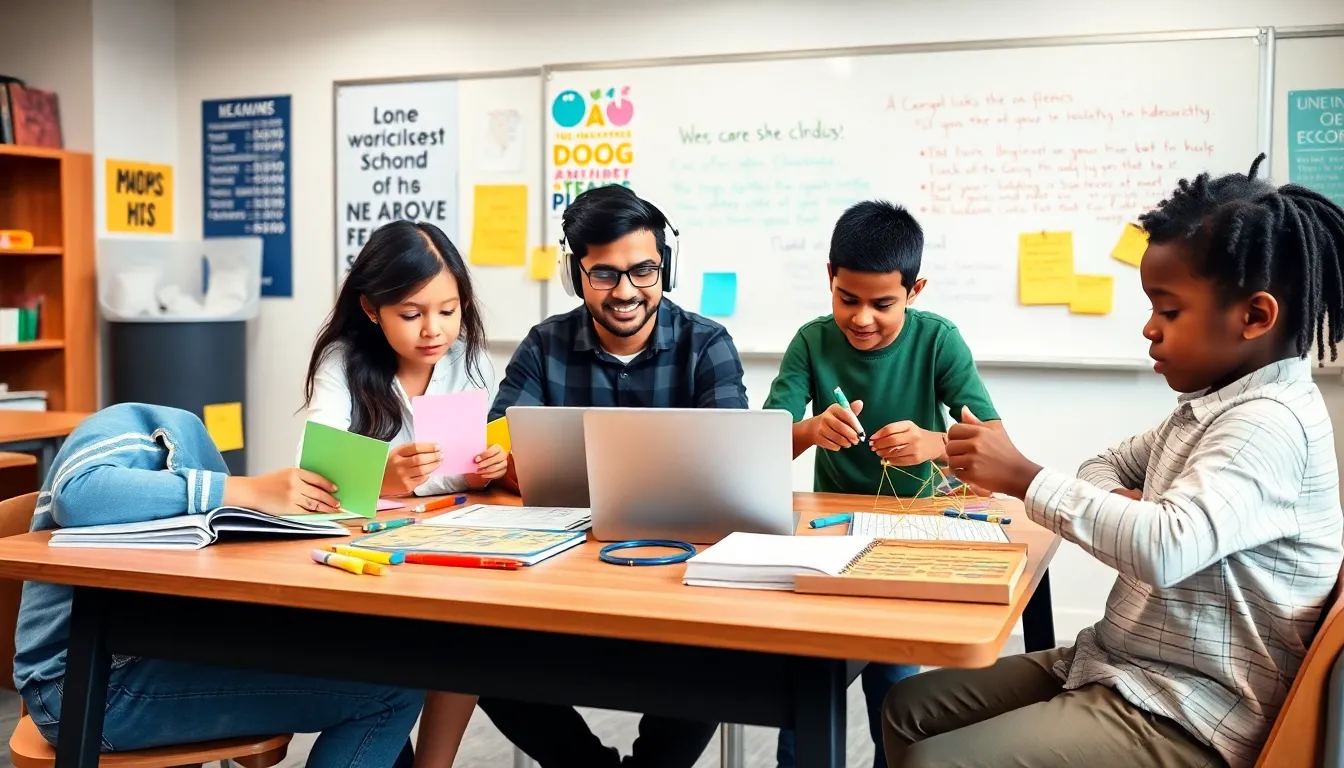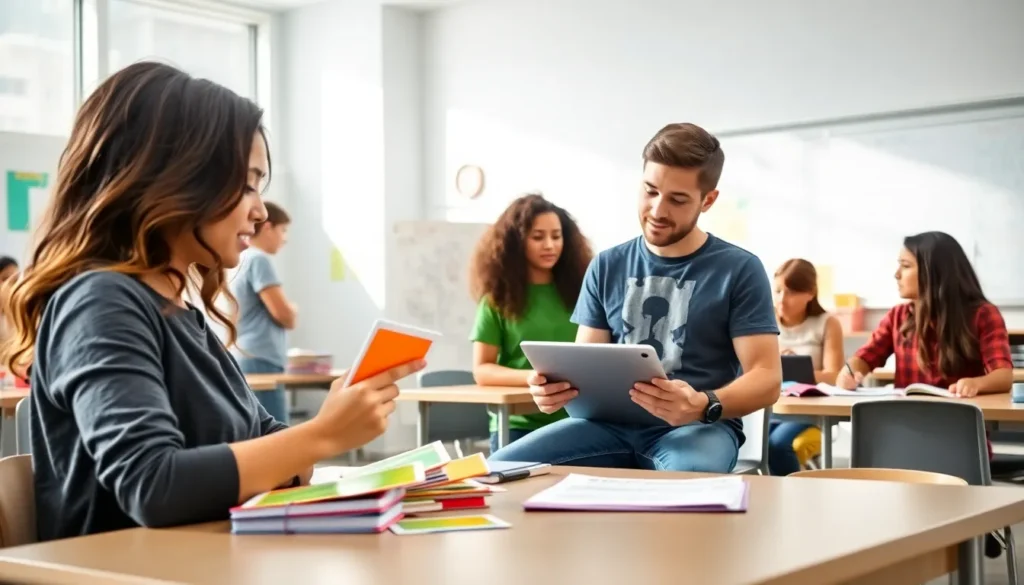Table of Contents
ToggleMiddle school is like navigating a roller coaster: it’s thrilling, scary, and often leaves students dizzy. As they swirl through a maze of assignments, test schedules, and social dynamics, the ability to study effectively becomes their saving grace. How can students transform their study habits from chaotic cramming to organized strategies that work? Let’s jump into some impactful tips designed to turn study stress into academic success. Who wouldn’t want to crush that next math test while still having time to binge-watch their favorite series?
Understanding Different Learning Styles

Every student learns differently, and recognizing one’s unique style can make a significant difference in their study process.
Visual Learners
Visual learners thrive on images, diagrams, and written notes. To cater to this style, students can use colorful flashcards or mind maps. The more visual cues they incorporate, the better they can remember complex concepts. They might also find it helpful to highlight important information in their textbooks or use videos to supplement their learning.
Auditory Learners
For auditory learners, listening is the key to success. This type of learner may excel by reading aloud, participating in discussions, or listening to recorded lectures. Podcasts and educational videos that focus on sound can also provide a significant advantage. Encouraging these students to explain what they’ve learned to someone else can reinforce their understanding.
Kinesthetic Learners
Kinesthetic learners are all about moving and doing. They often grasp concepts through hands-on activities. Creating models, conducting experiments, or even walking around while studying can aid in retention. They can benefit from stress balls or fidget tools to help focus while studying.
Effective Study Habits
Establishing effective study habits can set the foundation for academic achievement.
Creating a Study Schedule
Time management is crucial in middle school. A study schedule helps students allocate time efficiently for each subject, avoiding last-minute cramming. Students can designate specific study periods each day, ensuring they stick to their plan and balance assignments with leisure.
Setting Clear Goals
Setting specific, measurable goals provides students with direction. Instead of vague objectives like “do better in science,” they could aim for a specific grade in their next quiz. Breaking larger goals into smaller, actionable tasks helps maintain motivation and track progress.
Minimizing Distractions
Distractions abound, especially with smartphones and social media. Designating a quiet study area can mitigate interruptions. Students can turn off notifications, use apps that block distractions, or establish a plan to reward themselves with a short break after focused study sessions.
Utilizing Study Techniques
Employing different study techniques can enhance comprehension and retention.
Active Learning Strategies
Active learning involves engaging with the material rather than passively reading. Techniques such as summarizing information, teaching peers, or discussing topics in study groups can deepen understanding. Using real-life examples to relate to the study material boosts their interest as well.
Practice Tests and Quizzes
Taking practice tests helps students prepare for the real deal. Quizzes can identify knowledge gaps and guide focused revision. There are plenty of online resources that allow students to practice under exam conditions, making them feel more confident on test day.
Group Study Sessions
Group study sessions can be highly beneficial if structured well. Students can share insights, challenge each other on tricky subjects, and keep one another accountable. It’s a great way to make studying more social and less of a solitary burden.
Maximizing Resources
With the wealth of resources available, students should use what’s around them.
Online Tools and Apps
Technology isn’t the enemy: it’s an ally. There are numerous apps designed to make studying more straightforward, such as flashcard creators and organization tools. Programs that specialize in note-taking can help streamline information as well. Also, educational videos on platforms like Khan Academy can provide explanations for confusing concepts.
Library and Community Resources
Local libraries and community centers often offer tutoring programs, study materials, or study space. Students should take advantage of these resources as they provide valuable support outside the regular classroom setting. If available, they can also participate in after-school study clubs.
Communicating With Teachers
Communication is key in any learning environment.
Asking Questions and Seeking Help
Students should never hesitate to ask questions when they don’t understand something. Teachers are there to help, and most appreciate when students seek clarification. Lurking in confusion does not lead to success.
Participating in Class Discussions
Engaging in class helps students absorb information and engage with it actively. When students participate in discussions, they reinforce their learning and can often show their teachers they’re invested in the subject matter.



